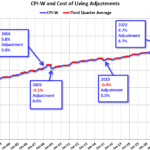While the average consumer may not need to know the details of a consumer product, that information is crucial for business owners, entrepreneurs, and product managers who want to create and sell products.
A deep understanding of the ins and outs of consumer products can help you better connect with your customers, differentiate yourself from your competitors, and navigate the consumer goods industry with confidence. Below, we explore the world of consumer products and the different categories that they fall into.
What is a consumer product?
Consumer products are finished goods that are purchased by individuals or households for personal consumption. These products satisfy a wide range of needs and include basic necessities such as food and clothing, as well as selective items such as electronics and home décor.
Types of consumer goods
Consumer products can be thought of as durable goods, nondurable goods, or services.
- Durable consumer goods. Tangible items that can be reused over time, such as furniture, kitchen appliances, and electronic devices.
- Non-durable goods. Tangible items that are quickly consumed and have a short lifespan, such as fresh food and toilet paper.
- Service item. Intangible services performed by others that benefit the customer without taking a physical form, such as tutoring or housecleaning.
Consumer Product Categories
Consumer products can be further classified based on certain factors such as: Consumer Behaviortangibility, and purchase frequency. The four categories of consumer products are:
1. Convenience products
Convenience products are everyday items that account for a large portion of retail sales. Consumers often purchase these retail items with minimal effort or through comparison shopping. These products are typically inexpensive, widely available, but have a short lifespan.
People often purchase convenience store products on impulse or out of habit. This category of consumer spending includes packaged goods such as laundry detergent, snack foods, toiletries, and other household essentials sold at local retailers. Direct to Consumer Packaged goods companies, online store.
2. Shopping Products
Consumers spend more time and effort purchasing shopping items compared to convenience items. Because durable goods are purchased less frequently, consumers often do more research before making a purchase decision. Examples of these types of goods include clothing, electronics, furniture, and appliances.
Buyers consider factors such as quality, style, price and reputation. Brand Value When evaluating shopping products. For example, when buying a new tablet, a customer might consider the quality of digital features such as display resolution, processor speed, battery life, and storage capacity. Similarly, a shopper might search online reviews to ensure that a furniture company doesn’t have any ongoing supply chain challenges that could delay the delivery of their new sofa.
3. Specialty Products
What are specialty products? Niche IndustryConsumers are prepared to spend a great deal of time and effort researching these products before purchasing. Examples of specialty products include: Luxury goodscollector’s items, sports cars and much more, but the specialty items don’t necessarily have to be exorbitantly priced.
Take a toothpaste tablet biteis an eco-friendly personal care brand. Founder Lindsay McCormick launched Byte to eliminate plastic toothpaste tubes and appeal to a niche demographic of sustainability-conscious people. “When I started looking into toothpaste, I realized there was something I didn’t understand: it came in a plastic tube and it had a ton of harsh chemicals, artificial flavors, and ingredients in it,” says McCormick. To tell Shopify Master Podcasts“We can create things that are good for the planet and good for our bodies.”
Specialty products tend to be expensive and are often distributed through limited channels such as high-end boutiques. For example, Baito is sold at Erewhon Market, an upscale supermarket chain in Los Angeles. Customer LoyaltyManufacturers and retailers of these products are focused on building a strong brand identity and delivering superior quality to drive profitable growth and compete with cheaper competitors.
4. Unwanted Products
Unsought products are goods or services that consumers do not actively seek or are unaware of until they need them. Consumers often purchase these products to prepare for emergencies, such as life insurance or hurricane survival kits. In some cases, unsought products may be products that consumers actively avoid, such as root canals or funeral arrangements.
Consumer Products FAQ
What are the four types of consumer goods?
There are four types of consumer goods: convenience goods, shopping goods, specialty goods, and unsolicited goods.
What are some examples of consumer products?
Examples of consumer products include convenience products such as food, beverages, and personal care products; shopping products such as electronics and home appliances; specialty products such as gourmet spice blends and designer handbags; and non-demand products such as insurance policies and funeral services.
What is the Consumer Goods Sector?
The consumer goods sector represents a significant part of the global economy. This sector includes consumer goods companies that sell end products designed for personal consumption. To stay competitive in the consumer goods industry, these companies must manage efficient supply chains, adhere to consumer protections, and adapt to changing consumer demands and preferences.







